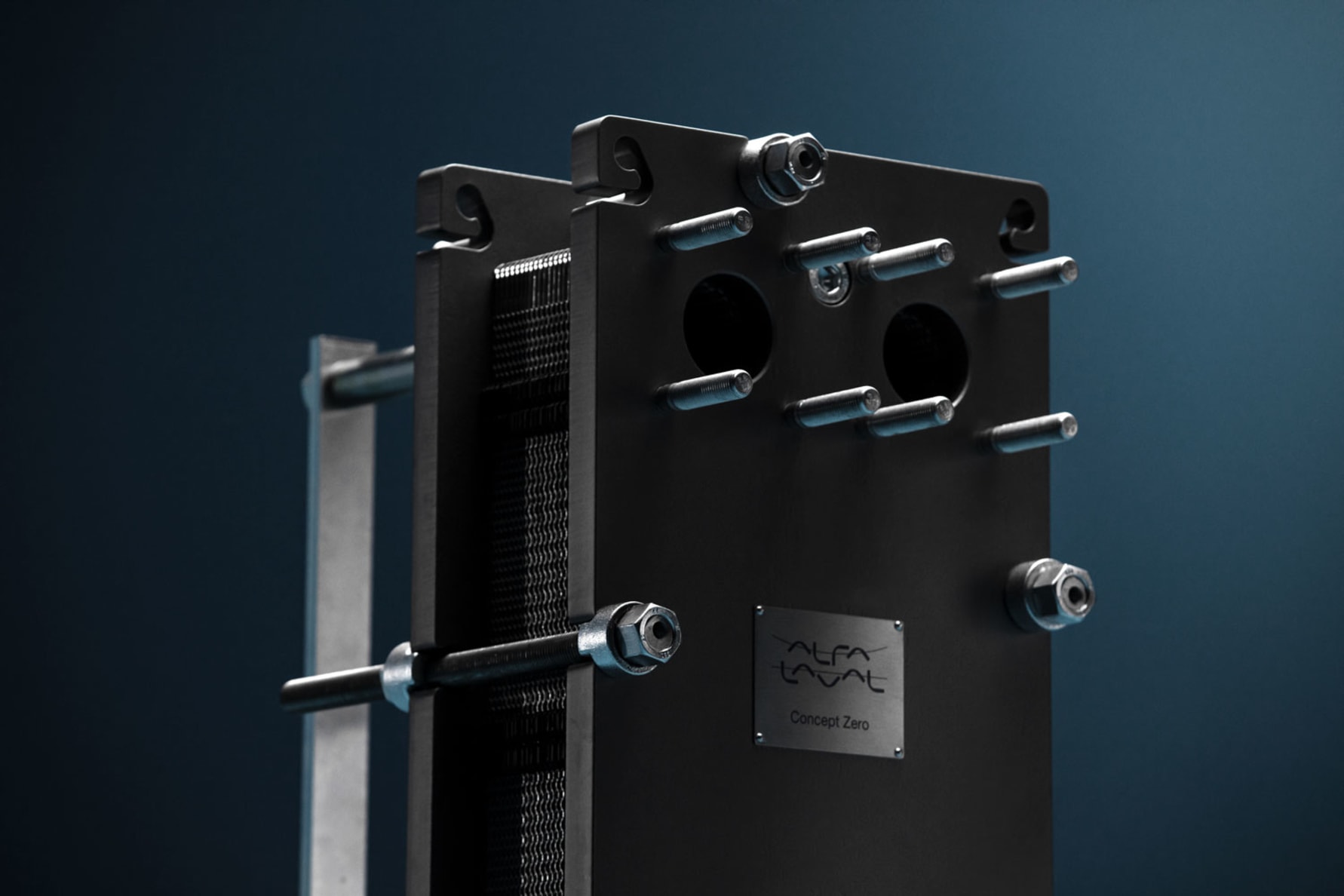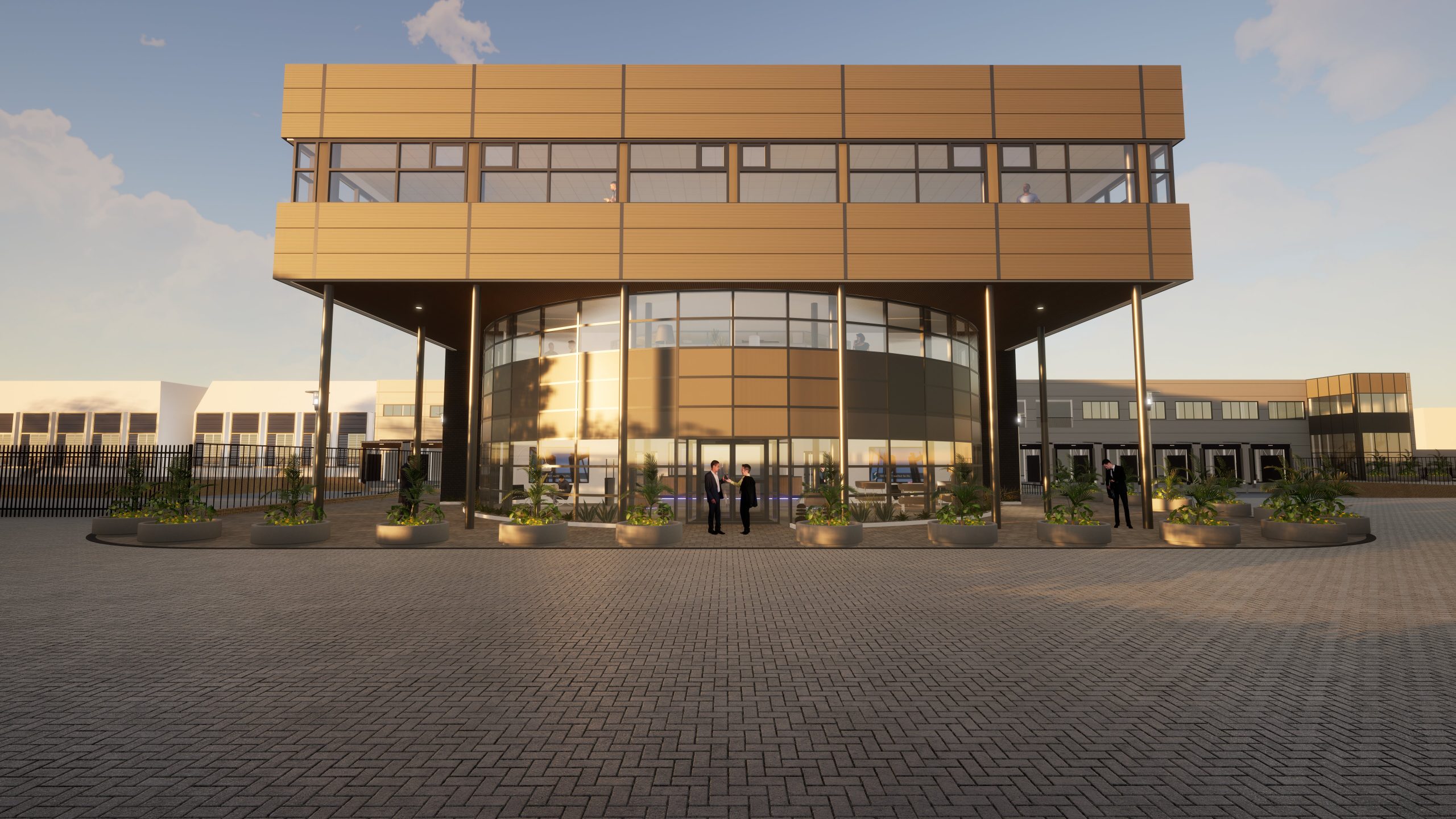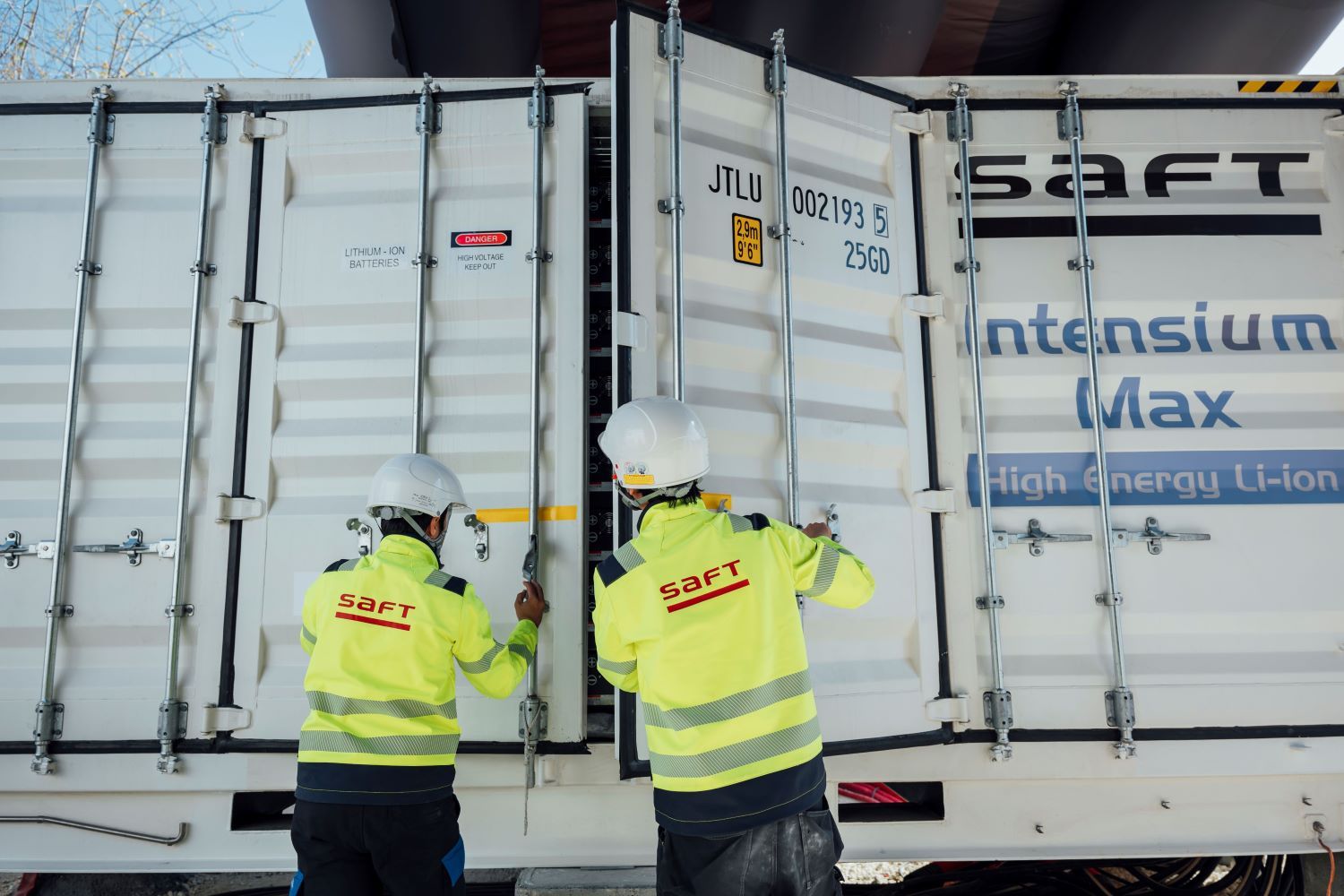Renewables and Energy: Infrastructure Builds Driving Sustainable Power
Colocation Strategies for Scalable Data Centre Operations
Data
Data Centre Build News & Insights
Data Centre Operations: Optimising Infrastructure for Performance and Reliability
Data Centres
News in Cloud Computing & Data Storage
Renewables and Energy: Infrastructure Builds Driving Sustainable Power
Vertiv opens a new manufacturing facility and test lab in India
Vertiv has announced the opening of a new manufacturing facility in Pune, India. The opening was to meet the surging demand for data centres and supporting infrastructure solutions globally, including India and the APAC region.
The new plant manufactures thermal management products and solutions tailored for colocation, cloud, telecom, and enterprise data centres, catering to both domestic and international markets. This is Vertiv’s third facility in India, joining with existing manufacturing facilities in Ambernath and Pune.
Spanning 4.8 acres (210,000ft2), the facility supports the manufacturing of cooling solutions ranging from 200W to 2MW+, including adiabatic free cooling chillers, large custom air handling units (AHU), thermal wall units, a new range of large direct expansion (DX), packaged DX, free cooling with economiser units, a new range of in-row cooling units, wall mount units, and rack cooling systems. The facility also boasts state-of-the-art psychometric labs, providing performance testing, a customer experience centre, and design support capabilities. It is located in an India Green Building Council (IGBC) compliant park focusing on sustainability and reducing environmental impact.
CEO of Vertiv, Giordano (Gio) Albertazzi, says, “With increasing global digitalisation and the rapid adoption of Artificial Intelligence (AI), the data centre industry is experiencing growth and a demand for more capacity, including for data centre thermal and power infrastructure. India’s emergence as a data centre hub in the APAC region is a key reason that we built this third manufacturing facility in India, and it reinforces our commitment to nurturing the country’s data centre ecosystem while also addressing global demand.”
Jessica Pereira - 12 January 2024
Data Centre Build News & Insights
Data Centres
Renewables and Energy: Infrastructure Builds Driving Sustainable Power
EcoDataCenter’s first data centre to use Alfa Laval heat exchangers with SSAB Zero steel
EcoDataCenter is the first to deploy Alfa Laval heat exchangers made using recycled steel, produced without new CO2 emissions from SSAB. This deployment is said to signify a pivotal moment in the ongoing effort to reduce carbon emissions within the supply chain, exemplifying the significance of collaboration in the journey towards a sustainable future.
''It is crucial to leverage innovations together with partners. This underlines the importance of collaborative efforts in mitigating emissions,'' says Peter Michelson, CEO at EcoDataCenter.
The result of a Product Carbon Footprint assessment of the latest data centre at EcoDataCenter 1 shows that 60% of the embodied carbon comes from the equipment. The introduction of Alfa Laval heat exchangers made using SSAB Zero, a recycled steel produced without new CO2 emissions, is a significant step forward in EcoDataCenter's mission to reduce emissions.
''Alfa Laval's commitment to sustainability is further strengthened through our collaboration with EcoDataCenter. By incorporating recycled steel in our heat exchangers, we are not only reducing our own carbon footprint but also driving the entire value chain towards a cleaner and more sustainable future,'' says Anna Blomborg, Manager of Data Center Alfa Laval.
Jessica Pereira - 9 January 2024
Data Centre Build News & Insights
Data Centres
News
Renewables and Energy: Infrastructure Builds Driving Sustainable Power
Sustainable Infrastructure: Building Resilient, Low-Carbon Projects
Vertiv TimberMod to help increase data centre sustainability
Vertiv has introduced the innovative Vertiv TimberMod variant of its Vertiv Power Module and SmartMod families, featuring mass timber as a key structural component instead of steel for prefabricated modular (PFM) data centre solutions.
Available in North America and in Europe, Middle East and Africa (EMEA), this ground-breaking introduction reflects Vertiv’s commitment to supporting customers' sustainability objectives by using a more environmentally friendly material that can minimise resource depletion and lower CO2 emissions.
Mass timber, if sourced from sustainably harvested wood, serves as a renewable construction material with the potential to minimise resource depletion and lower carbon footprint by up to three times, compared to steel based on the reduction of CO2 emissions associated with the cradle-to-gate product lifecycle and the transport of materials and structural elements to the assembly site. This eco-friendly choice aligns with Vertiv's mission to offer solutions that meet high-performance standards, but also contribute to the global effort to reduce CO2 emissions.
Vertiv TimberMod meets applicable building structural requirements, providing robust performance in the face of seismic activity, wind forces, and structural demands. Beyond its structural prowess, this innovative solution adds an aesthetic dimension to data centre architecture, seamlessly blending into diverse environments with an elegant design.
“We are dedicated to finding innovative solutions that can help reduce data centre carbon footprints through the use of environmentally friendly construction materials and processes,” says Viktor Petik, Vice President and EMEA Leader for Vertiv’s Integrated Modular Solutions business. “By incorporating materials from renewable sources, Vertiv TimberMod not only provides a more eco-friendly option but does so without compromising on performance, thus creating a positive impact on both the environment and our customers' operational efficiency.”
“Although timber data centres are not new, they have become much more accessible now that a major prefabricated modular data centre vendor offers data centre building blocks or an entire data centre built with timber, with the engineering assurance that it will remain reliable,” says Vlad Galabov, Director for Cloud and Data Centre at Technology Research and Advisory Group, Omdia.
Vertiv TimberMod was unveiled at Vertiv’s press conference, ‘Vertiv Driving Innovation 2023: The Prefabricated Modular Revolution’, and is the latest addition to a growing portfolio of standard and customisable PFM solutions. The flexible capacity of Vertiv prefabricated solutions makes them an ideal choice for data centres of all sizes, from small and medium to hyperscale, offering scalability and adaptability that align with the dynamic growth of businesses. Easy deployment and flexibility are key features, ensuring that customers can expand data centre capabilities seamlessly.
Vertiv also provides end-to-end services to facilitate rapid deployment and efficient operations. This comprehensive support includes commissioning, ongoing maintenance, remote monitoring, and training, reinforcing the dedication to provide a holistic solution for customers.
Isha Jain - 29 November 2023
Data Centre Build News & Insights
Data Centres
Innovations in Data Center Power and Cooling Solutions
News
Renewables and Energy: Infrastructure Builds Driving Sustainable Power
Sustainable Infrastructure: Building Resilient, Low-Carbon Projects
Pulsant gains recognition for environmental and sustainability initiatives
Pulsant has seen its commitment to environmental and sustainable working practices receive two key industry certifications in recognition of its focus on environmental and sustainability initiatives across its data centre estate and management systems.
Rating in the top 25% of responding businesses, it received a silver medal from EcoVadis, with particular strengths in the area of its environmental practices. This achievement reflects Pulsant's commitment to environmental stewardship and social responsibility. The company has implemented numerous initiatives to reduce its carbon footprint, minimise waste, and promote ethical business practices, including wellbeing and mental health.
Furthering its sustainability credentials, its energy management system has been awarded the respected ISO 50001 certification, giving independent assurance to its effectiveness in improving its energy performance. As an operator of a variety of UK data centres, it is working towards an overall PUE of 1.3 by 2030, and is on track to surpass the 2023 target of 1.53, following from the success of a number of initiatives such as consolidation project at Maidenhead site, cold aisle containment, cooling and UPS infrastructure upgrades, and temperature optimisation.
Commenting on the news, Helen Munro, Head of Environment and Sustainability at Pulsant, notes, "Sustainability is a key priority at Pulsant. We are committed to continuous improvement across all aspects of our activities, both internally and across our wider supply chain. These certifications highlight that our comprehensive policies and programmes are delivering meaningful results. Credit to the teams across our sites and operations across all parts of the business for making it happen."
As the need for improved environmental management intensifies, Pulsant is focused on further minimising its climate impact, with initiatives already underway, including piloting HVO fuelled generators and evolving cooling technologies.
“We are currently ahead of the annual targets we set to work towards our 2050 net zero targets, but well aware that we need to continue to push to find new opportunities to improve our carbon footprint and environmental impact in the years ahead. We all have a part to play in safeguarding the planet and we are aware of the role our organisation needs to play in that,” concludes Helen.
Isha Jain - 7 November 2023
Data Centre Build News & Insights
Data Centres
News
Renewables and Energy: Infrastructure Builds Driving Sustainable Power
Sustainable Infrastructure: Building Resilient, Low-Carbon Projects
CoolIT Systems and Switch Datacenters to launch sustainable data centres
CoolIT Systems and Switch Datacenters have unveiled a strategic partnership that will benefit an industry seeking to improve the sustainability of data centres.
Following the recent release of the World Economic Forum’s Top 10 Emerging Technologies, featuring 'sustainable computing' as the ninth ranked emerging technology, the collaboration facilitates data centre space and the necessary technology to significantly curtail energy and water consumption inherent in modern data centres.
With a history spanning more than a decade, Switch Datacenters has demonstrated a commitment to environmental responsibility and sustainability. Its latest 45MW AMS6 data centre, near the Schiphol airport area, features an HPC/AI-ready design that uses data centre heat to warm adjacent greenhouses. Currently under development, its AMS5s is designed to make a significant contribution to the Amsterdam municipal heat grid with green, CO2-neutral heat.
For both data centres, there's a marked preference for liquid cooling, because it allows heat extraction at temperatures higher than traditional air cooling, offering enhanced economic value.
CoolIT Systems is the provider of efficient Direct Liquid Cooling (DLC) and Rear Door Heat Exchangers (RDHx) that enable heat reuse and help customers meet key ESG targets. Its DLC technology is featured as a factory-installed, warranty approved feature from most major servers OEMs.
“CoolIT's DLC and RDHx technologies have been instrumental in various data centre heat reuse projects for years, with customers reporting at minimum a savings of 10% on energy bills (OPEX), more than 50% on CAPEX spends, and examples of PUE lowered from 1.30 to 1.02,” expresses Peggy Burroughs, Director of CoolIT Next. "Our collaborations with most major server OEMs have cultivated an expansive ecosystem for clients aspiring to achieve both business and ESG goals."
"CoolIT is the right company to help make our vision a reality at an industrial scale. Both CoolIT and Switch Datacenters have shared the same passion for sustainable innovation for years and truly want to elevate the industry's adoption of liquid cooling. We believe liquid cooling will be the game-changer in the next wave of sustainable data centre designs, and CoolIT is one of the very few companies that can lead this upcoming demand, thanks to their long history of innovation, reliability, breadth of portfolio, and capabilities to scale with their numerous IT partners worldwide," says Gregor Snip, CEO of Switch Datacenters.
Data centres are projected to account for 8% of the global electricity consumption by 2030. Technologies such as DLC can significantly reduce data centre energy consumption by 25 - 40% and deliver water savings of 70 - 97%, depending on local climate and specific implementations.
Isha Jain - 6 October 2023
Data Centre Build News & Insights
Data Centres
News
Renewables and Energy: Infrastructure Builds Driving Sustainable Power
Saft battery replaces diesel backup at Microsoft data centre
Saft, a subsidiary of TotalEnergies, has delivered a battery energy storage system (BESS) to replace diesel backup power generators at Microsoft’s sustainable data centre in Sweden. The system entered operation in June 2023 as a key milestone on Microsoft’s path to diesel-free data centres by 2030.
The new BESS results from a collaboration formed between TotalEnergies and Microsoft in March 2021 to drive towards net zero goals with opportunities for wider deployment.
Until now, diesel generators have been essential for data centre power continuity in the case of a grid outage. Running generators for backup and testing was an unavoidable source of greenhouse gas emissions. The new large-scale BESS overcomes this by providing four groups of 4MWh each for up to 80min of back up energy.
Saft deployed the BESS over 16 months following Microsoft’s approach to data centre architecture. This focuses on safety and reliability by creating backup systems in groups that work independently to ensure a high level of redundancy.
As well as displacing the diesel generator, the BESS supports grid stability and provides black start capability to ensure rapid recovery of the power grid in the case of an outage.
Saft delivered the BESS on a turnkey basis with integrated power conversion and control equipment divided across four independent groups. The scope included a total of eight Intensium Max 20 High Energy containers organised in four groups, each capable of delivering a peak power rating of 3MW.
Isha Jain - 5 October 2023
Data Centre Build News & Insights
Data Centres
News
Renewables and Energy: Infrastructure Builds Driving Sustainable Power
Asanti Datacentres takes major step towards net zero future
Asanti Datacentres has signed an energy supply deal which will reduce the carbon emissions at its operations across the UK to zero.
The deal with Bryt Energy means that Asanti will reduce its carbon footprint significantly, reducing carbon emissions related to its 14mKW of energy use to zero, eradicating an estimated 2,856 tonnes of CO2 every year.
Asanti operates six 'regional edge' data centres across the UK, including Hamilton, Livingston, Reading, Leeds, Farnborough and Manchester.
The news comes during the Scottish Government’s ‘Climate Week’, an annual event that encourages individuals, communities and businesses to come together and raise awareness of what’s being done to tackle the global climate emergency.
The signed 100% renewable electricity contract, Power Purchase Agreement (PPA), means that Asanti’s data centres will be powered by a combination of solar, wind and hydro energy, which will be supplied by Bryt Energy. Business-wise solutions supported Asanti throughout the process and will continue to manage the energy procurement on its behalf.
Its move to 100% zero carbon compares to a UK industry average of less than 40%.
Click here for more latest news.
Isha Jain - 29 September 2023
Data Centre Build News & Insights
Data Centres
Renewables and Energy: Infrastructure Builds Driving Sustainable Power
Sustainable Infrastructure: Building Resilient, Low-Carbon Projects
Alfa Laval spearheading drive for more sustainable data centres
Alfa Laval has launched its latest, most sustainable T21 gasketed plate heat exchanger (GPHE), to help the data centre sector save tonnes of CO2, through highly efficient cooling and minimised energy consumption, following the reports that UK greenhouse gas emissions have risen year-on-year.
According to a June 2023 report from the Office for National Statistics, UK greenhouse gas emissions rose by 3% to just over 502 million tonnes of CO2 equivalent between 2020 and 2021. This announcement was followed by findings from the International Energy Association (IEA), that energy use from data centres has grown by 20 - 40% annually from 2010. With the IEA expecting further, more moderate sector expansion, more efficient facilities will be needed to keep its carbon footprints from growing.
These figures and findings, alongside tightening sustainability legislation, underline why the data centre industry must maintain its impressive momentum around decarbonisation, and the impact reviewing process equipment at existing and new facilities could have on these ongoing efforts.
According to Gemma Reeves, Business Unit Manager for Heat Transfer at Alfa Laval, sector sustainability strategies should be expanded to focus on minimising energy use and realising heat recovery opportunities. Advanced, efficient plate heat exchanger technologies such as the T21 will be key to this.
“Energy efficiency can account for more than 40% of emissions reductions in the next 20 years and will be crucial to achieving net zero,” Gemma says. “Considering 50% of today’s potential for energy savings comes from industry, and 30% can be achieved from buildings, this puts pressure on power-intensive sectors to decarbonise. For data centre stakeholders, the selection of more efficient process equipment can provide an immediate way to reduce carbon footprints while optimising performance.
“For example, our new T21’s upgraded plates provide more opportunity to increase thermal efficiency, minimising the demand on mechanical cooling methods that are becoming increasingly pushed to their limits as rack densities increase. Similarly, it allows for more effective recovery of waste heat, which can be redeployed for other site processes or for use in other systems such as district heating schemes. Harnessing and reusing these otherwise wasted process by-products will be crucial to emissions reduction, so I would urge data centre stakeholders to explore solutions that will allow them to do so effectively and efficiently, including the T21.”
The new T21 includes Alfa Laval’s energy driven patented efficiency features, including CurveFlow distribution area technology to improve media flow and minimise fouling risks, alongside the company’s OmegaPort, which further enhances flow and thermal efficiency.
The T21 also incorporates the possibility to further optimise the unit efficiency with Alfa Laval’s FlexFlow plate design, which uses asymmetric channels to optimise pressure drop utilisation and make additional improvements to thermal efficiency when unequal flows are at play.
“GPHEs are often crucial to a facility’s uptime, so ensuring best possible performance and equipment specification is a must for data centres,” Gemma concludes. “Collaboration across the supply chain will be required to ensure energy consumption can be reduced and operators’ decarbonisation journeys remain on track. Specifying effective solutions such as the T21 will be crucial to this, so it is vital data centre stakeholders work in close partnership with suppliers to identify opportunities where upgraded equipment can help turn potential efficiencies into reality.”
Click here for more latest news.
Isha Jain - 25 September 2023
Data Centre Build News & Insights
Data Centres
News
Renewables and Energy: Infrastructure Builds Driving Sustainable Power
Sustainable Infrastructure: Building Resilient, Low-Carbon Projects
Vantage Data Centers to continue deploying renewable generator fuel
Vantage Data Centers has announced the continued deployment of hydrotreated vegetable oil (HVO), a renewable fuel to replace conventional diesel fuel in generators. The company will roll out HVO in several of its markets in North America and EMEA.
HVO is 100% biodegradable and non-toxic, offering a more sustainable fuel option while delivering the same level of functionality as traditional diesel. Repurposing waste oils like vegetable oil to create sustainable fuels significantly reduces the embodied carbon due to the cleaner sourcing and creation process. Leveraging HVO offers an actionable opportunity for Vantage and other data centre operators to take a positive step toward reducing carbon emissions.
Initially deployed as a pilot at Vantage’s Cardiff, Wales campus in 2022, the company’s deployment of HVO as an alternative to diesel fuel yielded progress toward its carbon goals without the need for new or updated infrastructure. Given the success of the pilot, it officially implemented HVO at its newest facility, CWL13, on the Cardiff campus and is currently working to deploy the renewable fuel throughout the rest of the campus. In addition, it will deploy HVO in one of its North American flagship markets, Santa Clara, California, by the end of the year.
The broad launch of hydrotreated vegetable oil comes as the company progresses toward its sustainability goals. The use of renewable diesel fuels significantly reduces the embodied carbon of the fuel consumed in diesel generators, which helps to reduce Scope 3 emissions associated with the company’s supply chain. According to fuel suppliers, the use of HVO reduces the lifecycle carbon emissions by 65 - 90% compared to conventional diesel.
In 2022, Vantage partnered with the Data Center Coalition (DCC) and its members to lead a technical working group focused on driving market support for HVO as availability and costs vary by geography. Based in the Northern Virginia area, where HVO prices are approximately 95% higher than diesel fuel, DCC seeks to influence the supply chain and stakeholders to unlock increased availability.
Isha Jain - 15 September 2023
Data Centre Build News & Insights
Data Centres
Innovations in Data Center Power and Cooling Solutions
Renewables and Energy: Infrastructure Builds Driving Sustainable Power
Sustainable Infrastructure: Building Resilient, Low-Carbon Projects
Is on-premise hydrogen production for greenhouse gas abatement a viable option?
By Joe Sheehan, Technical Director, i3 Solutions Group
With green hydrogen widely touted as the most desirable option for achieving climate change goals, the debate is heating up in the data centre sector, where proponents of hydrogen believe it could well be an ideal primary power source for putting the sector on a path to net zero.
But if hydrogen is the answer, there are important issues to address, not the least of which the necessary changes to the utility power and gas infrastructure. Additionally, we urgently need to gather data on the greenhouse gas (GHG) abatement benefits that might accrue from data centres using hydrogen.
For a data centre, the real GHG abatement value of hydrogen lies in decarbonising the electricity supply - swapping out the utility grid for primary power and using green hydrogen to fuel engines or fuel cells for continuous use. This would take the data centre’s electrical consumption and replace it with a genuine source of renewable energy, since hydrogen causes no carbon emissions in use and green hydrogen is generated using only power from renewable sources.
But achieving such a goal brings its own challenges. While many countries have developed a strategy for hydrogen, the hydrogen economy itself – in the form of production, transport and storage - is just not here yet. Practically no location yet supplies infrastructure or any piped hydrogen. It is certainly not yet possible to bring in vessels containing compressed hydrogen at a sufficient volume and rate to provide for full and continuous operation of a modern data centre.
One obvious solution to this challenge could be for data centres and other energy intensive users to become both hydrogen producers and storage facilities. However, there isn’t currently a viable on-site source of clean energy that would produce green hydrogen by electrolysis of water.
Where could such an energy supply come from? One possible answer is for data centres to tap into a renewable power grid and utilise such a grid’s surplus energy for the production of green hydrogen. When the wind is blowing or the sun is shining and/or demand is low, taking electricity from Renewable Energy Resources (RERs) means the carbon emissions associated with each kilowatt hour of energy supply are low. And in the opposite circumstances – when the wind is not blowing, the sun is not shining, and electrical demand is high – data centres could operate using its own reserves of locally stored green hydrogen rather than the utility grid topping up capacity using fossil-fuelled power plants to fulfil demand. Use of hydrogen stored on-site for peak shaving at times of high demand and low renewable supply levels out demand on the grid. This is a form of carbon trade-off, since drawing less power from the grid reduces the use of fossil fuels, achieving a net gain in emissions reduction.
But is the round-trip efficiency, using this strategy good enough to achieve a meaningful advantage?
Modelling the carbon benefits
The big question is whether on-site hydrogen production is economically and spatially viable and offers affordable benefits in terms of greenhouse gas abatement.
Using carbon intensity data which is publicly available from grid networks in the UK and Ireland, i3 built a mathematical model of the process and measured what GHG abatement benefits it might bring about. It factored in the storage and technology that would be necessary, with the model using a nominal 10MW data centre in different locations.
The model showed the returns are quite modest in terms of carbon emission reductions in places like Scotland, where there are a lot of renewables on offer. It is possible to reduce by about 10% a data centre’s energy or carbon emissions - approximately 500 tonnes of carbon per year.
Interestingly, the percentage reduction in the southeast of the UK was smaller, but that worked out to be the same carbon reduction in absolute terms because there is higher grid carbon intensity in the region. In other words, the carbon costs are higher, so a smaller percentage reduction is an equivalent saving.
These modest returns need to be weighted against the cost of applying the hydrogen technology to data centres at sufficient scale.
The i3 model provides useful insight about the need to coordinate with grid-level facilities. It has also aided understanding of how battery energy storage, and in future, hydrogen, could be used in conjunction with the grid for a range of technologies, including various forms of energy storage and electricity demand reduction in data centres.
The tool developed can be applied to data centre designs for many types of energy storage systems and reveal what potential benefits they bring about in terms of carbon reduction.
The amount of activity in the hydrogen market, from production to transport to storage is accelerating. The biggest cost is green hydrogen production, for which excess renewable energy is required. However, it is projected that these costs will come down. Some point to conditions where because grids are integrating increasing amounts of power generated using renewable energy sources this will lead to excess capacity at times of low user demand, making more clean energy available for electrolysis.
In addition, the huge growth in the scale of electrolyser production will aid the speed at which the economics of green hydrogen production will swing in favour of the consumer. As green hydrogen becomes more available, the economies of scale will start to improve, making hydrogen a more viable fuel source for electricity for powering data centres.
Production value
Like many countries, the UK is a long way from a national hydrogen gas transport network (pipes), and therefore local production in data centres and other energy intensive industries should be considered.
Designing and developing data centres with hydrogen in mind needs to happen. We can future-proof data centres for the growth of hydrogen production and supply, for example, by specifying the use of reciprocating engines or fuel cells which can be run using hydrogen as well as other fuels in data centre designs.
Click here for more latest news.
Isha Jain - 12 September 2023

Head office & Accounts:
Suite 14, 6-8 Revenge Road, Lordswood
Kent ME5 8UD
T: +44 (0)1634 673163
F: +44 (0)1634 673173









